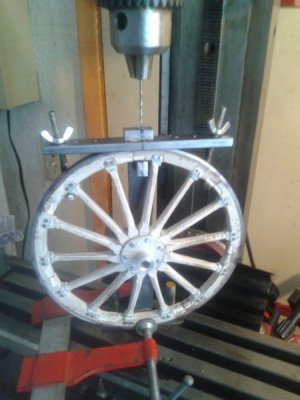- Joined
- Apr 23, 2011
- Messages
- 2,476
Seen a fixture like this made of iron with multiple fulcrum holes as an attachment for a shaper.....+1 on Jim's suggestion
View attachment 227434
You could probably get away with making it from heavy plywood. Secure the base board to your mill, with the pivot point 7" from your cutter and sweep the pivoting arm back and forth manually.
Cheers Phil
A few thoughts on your project... I'll try to avoid repeating the other good ideas...
4. Router bits will work on aluminum. I've used them in my mini-mill. In your case, maybe actually use a router, guided by a template jig, making a series of passes until reaching the final depth.
Greg
In spite of the two thick blocks I am getting too much of chatter. If I run the mill at low speeds I can see heavy vibration of the piece being machined. So I am not sure how a rotating jig would perform. I am looking at reducing the depth of cut/penetration next and try doing it in two passes. So far it was done in just one pass.
Also a little "out of the box", but.......If you could find a ~14" carbide-tipped blade and use a big table saw, I could picture a hinged jig to lower it onto the blade (or raise the blade into it?), move over one kerf width and repeat. I doubt you could find a dado blade that diameter.
The pieces fit quite good.
I had to make a dedicated drill and tap jig for drilling a large 14 inch diameter cast aluminum ring using a hand held drill as was simply too big for any of my machines. It too worked great. I will share pictures in a couple of days.

